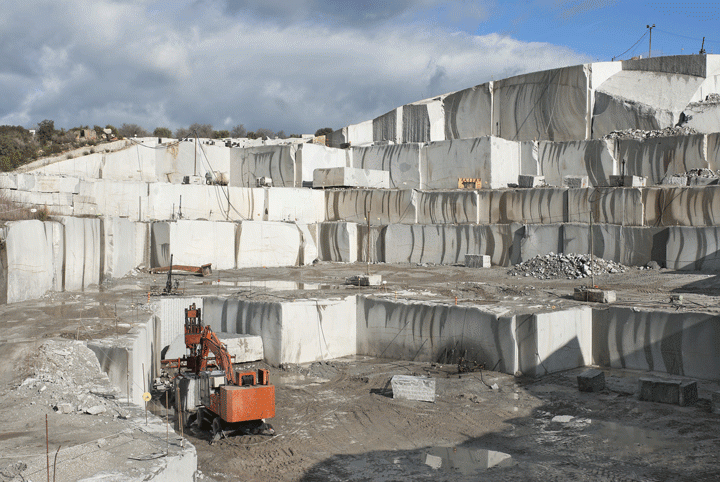The Concealed Gems: Checking Out Granite Quarries in South Africa
The Concealed Gems: Checking Out Granite Quarries in South Africa
Blog Article
Unearthing the Rich History and Lasting Practices of Granite Quarrying
As we base on the precipice of uncovering the detailed tapestry of granite quarrying, a journey with time discloses not just the physical act of drawing out rock yet also the social and historical importance woven right into the very textile of this technique. From the ancient beginnings that laid the foundation for modern-day quarrying techniques to the sustainable methods that are shaping the future of this market, each chisel mark on granite surface areas tells a tale waiting to be unearthed (granite quarries in south africa). The tradition of granite quarrying stretches far past simple removal; it is a testimony to human ingenuity, durability, and the long-lasting appeal of this marvelous stone
Ancient Origins of Granite Quarrying
Dating back to old civilizations, the practice of quarrying granite has actually been an integral part of human background and architectural advancement. The earliest proof of granite quarrying go back to old Egypt, where enormous pyramids and elaborate sculptures were crafted from this long lasting rock. The Egyptians utilized primitive devices to draw out granite blocks from quarries, showcasing the importance of this material in their significant building and constructions.
Progressing in history, the Greeks likewise made considerable payments to the quarrying of granite. The Greeks made use of granite in various architectural wonders, such as temples and sculptures, showing their ability in shaping and sculpting this hardy rock. The Romans additionally improved the methods of quarrying granite, utilizing advanced devices like blades and hammers to extract and shape granite for their iconic frameworks.
Through the centuries, the technique of quarrying granite has developed, with modern technologies improving performance while maintaining the timeless appeal of this natural stone - granite quarries in south africa. From ancient civilizations to modern builders, the tradition of granite quarrying proceeds to form our globe
Development of Quarrying Methods
The development of quarrying methods has been marked by a continual progression towards better performance and accuracy in drawing out granite. From the rudimentary techniques utilized by our ancestors to the advanced innovations utilized in modern quarrying operations, the sector has actually gone through significant advancements. Early quarrying methods included manual work with fundamental tools such as blades, hammers, and wedges to draw out granite blocks from the earth. As worlds advanced, strategies like fire-setting and primitive dynamites were presented to help with the removal process.
In more recent times, the arrival of equipment transformed the quarrying sector, enabling much faster extraction prices and boosted productivity. Technologies such as ruby wire saws, high-pressure water jets, and pneumatically-driven drills have come to be look at here now standard in contemporary quarries, permitting exact cutting and reduced waste. Moreover, advancements in computer-controlled tools and 3D modeling have enhanced quarrying procedures, resulting in marginal environmental impact and enhanced sustainability techniques. As the demand for granite remains to increase, the advancement of quarrying techniques continues to be essential to conference industry requires effectively and sustainably.
Social Value of Granite
Granite holds a profound social relevance across various people due to its long-lasting existence in architectural work of arts and respected monuments. The cultural importance of granite extends past its physical qualities; it symbolizes resilience, stability, and eternity, making it a sign of enduring heritages and customs.

Lasting Practices in Quarrying
Among the abundant background of granite quarrying and its cultural relevance lies an expanding focus on lasting techniques within the market. As ecological recognition and problems about resource exhaustion have actually heightened globally, the quarrying sector has significantly accepted lasting techniques to reduce its effect on the environment and bordering areas.

In addition, improvement and rehab of quarry sites post-extraction are indispensable to lasting methods. By bring back quarried areas to a natural or valuable state, such as developing wild animals habitats or entertainment areas, quarriers visit here can counter the environmental impact of their operations and add positively to the neighborhood environment.
Legacy of Granite Quarrying
With a historic background soaked in workmanship and commercial development, what enduring influence has granite quarrying left on the landscape of modern culture? The legacy of granite quarrying transcends plain removal methods; it has shaped architectural wonders, urban landscapes, and cultural heritage worldwide. The sturdy nature of granite has made it a recommended choice for monoliths, structures, and framework, standing as a testament to the skill and creativity of quarry employees throughout generations.
Moreover, the economic footprint of granite quarrying can not be forgotten. The market remains to give employment possibility and drive neighborhood economic climates in areas where granite removal is widespread. It has additionally stimulated technological improvements in quarrying techniques and tools, causing much more reliable and sustainable methods.
In terms of sustainability, the tradition of granite quarrying consists of efforts to reduce ecological influences through improvement tasks and responsible resource monitoring. By stabilizing financial passions with environmental stewardship, the market makes every effort to ensure that future generations can continue to benefit from this enduring all-natural source.
Conclusion

Report this page